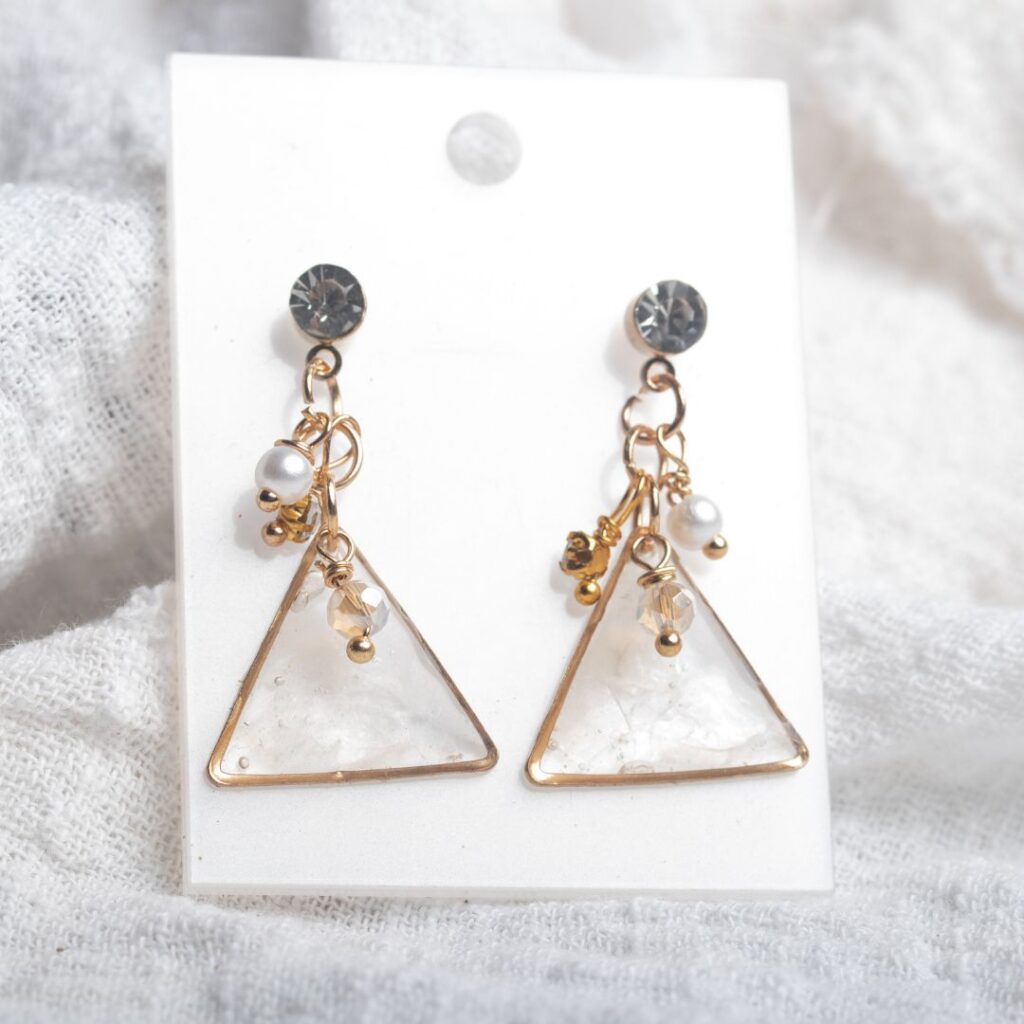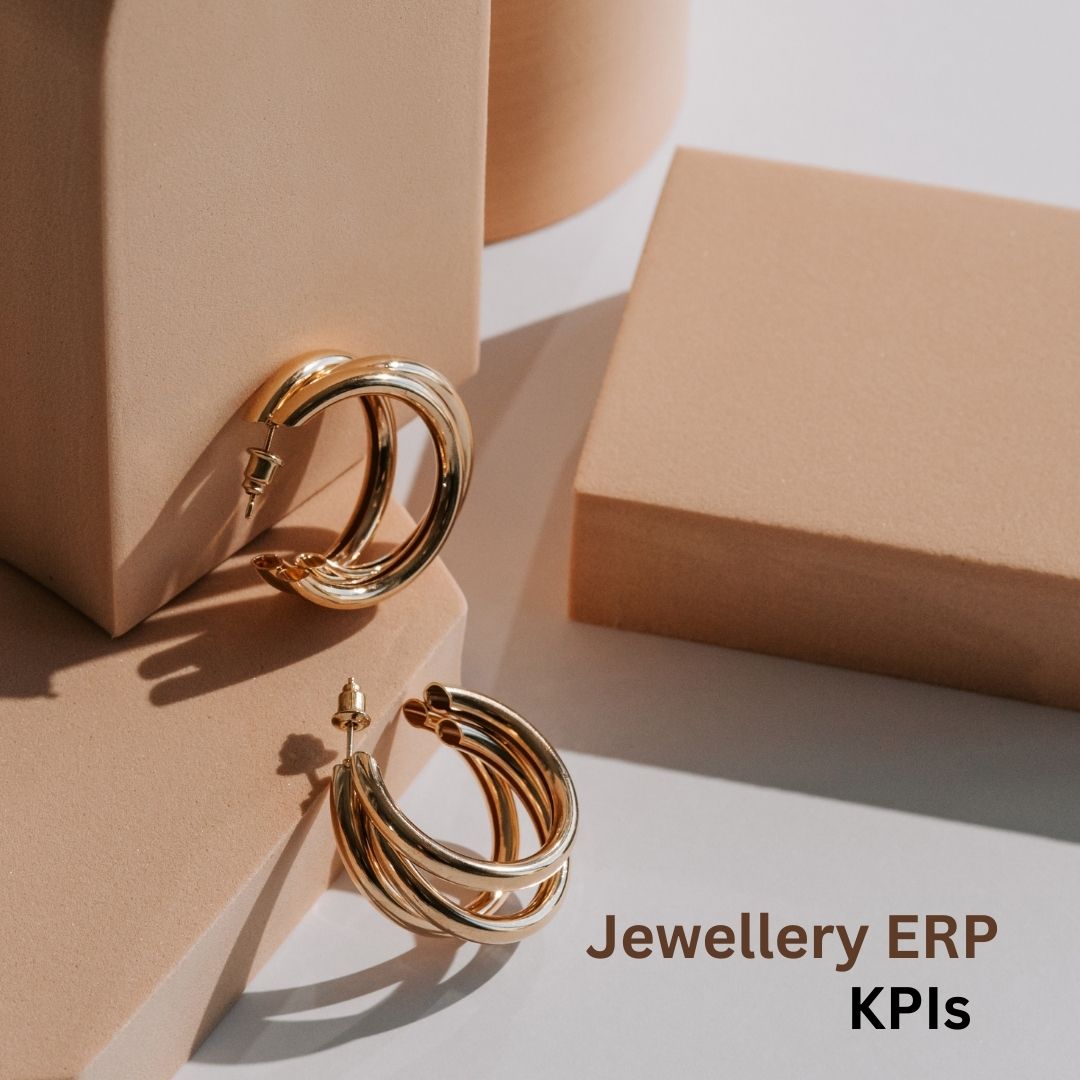The jewellery industry operates within a complex ecosystem where precision, quality, and financial performance intersect to create sustainable business success. In today’s competitive marketplace, jewellery businesses must leverage sophisticated technology solutions to monitor, analyze, and optimize their operations across multiple dimensions. Enterprise Resource Planning (ERP) software specifically designed for the jewellery industry has emerged as an indispensable tool for tracking critical performance indicators that drive strategic decision-making and operational excellence. Understanding and effectively monitoring jewellery ERP KPIs enables businesses to maintain competitive advantages while ensuring profitability, customer satisfaction, and sustainable growth in an industry where margins are often tight and customer expectations continue to evolve.
Modern jewellery businesses face unique challenges that distinguish them from other retail and manufacturing sectors. The management of precious metals with fluctuating market values, intricate supply chains involving multiple artisans and suppliers, complex inventory tracking requirements for unique pieces, and the need to maintain exceptional quality standards across all operations create operational complexities that demand sophisticated monitoring and management capabilities. ERP analytics jewellery solutions have been specifically developed to address these industry-specific requirements, providing comprehensive dashboards and reporting capabilities that transform raw operational data into actionable business insights.
The strategic importance of Key Performance Indicators (KPIs) in jewellery business management cannot be overstated. These metrics serve as the compass that guides business leaders through the complexities of inventory management, production planning, customer relationship management, and financial optimization. When properly implemented and consistently monitored through specialized ERP systems, KPIs provide the foundation for data-driven decision-making that can significantly improve operational efficiency, reduce costs, enhance customer satisfaction, and ultimately drive sustainable profitability.

1. Inventory Turnover Rate and Stock Management Efficiency
Inventory turnover rate stands as perhaps the most critical KPI for jewellery businesses, representing the frequency with which inventory is sold and replaced over a specific period. This metric provides crucial insights into demand patterns, pricing strategies, product popularity, and overall operational efficiency. In the jewellery industry, where inventory often represents significant capital investment in precious metals and gemstones, understanding and optimizing inventory turnover becomes essential for maintaining healthy cash flow and profitability.
Jewellery ERP KPIs related to inventory management extend far beyond simple turnover calculations to encompass sophisticated analytics that account for the unique characteristics of jewellery inventory. Unlike traditional retail inventory, jewellery pieces often have varying values based on market fluctuations in precious metal prices, seasonal demand patterns, and style preferences that can shift rapidly with fashion trends. ERP systems designed for jewellery businesses incorporate real-time precious metal pricing feeds, seasonal adjustment factors, and trend analysis capabilities that provide accurate and actionable inventory performance data.
The complexity of jewellery inventory management requires multi-dimensional tracking that considers not only the physical movement of products but also the financial implications of holding inventory with fluctuating intrinsic values. Modern ERP analytics jewellery platforms track inventory performance across multiple categories including finished goods, work-in-progress items, raw materials (precious metals and gemstones), and components. This granular level of analysis enables businesses to identify which product categories are performing well, which items are moving slowly and may require promotional support, and which inventory investments are generating the highest returns.
Advanced inventory KPIs tracked through jewellery ERP systems include stock-to-sales ratios by product category, aging analysis for slow-moving inventory, precious metal utilization efficiency, and gemstone procurement optimization metrics. These indicators help businesses maintain optimal inventory levels while minimizing carrying costs and reducing the risk of obsolete inventory. The integration of demand forecasting algorithms with historical sales data, seasonal patterns, and market trend analysis enables jewellery businesses to make more informed procurement and production decisions.
The seasonal nature of jewellery sales, with significant peaks around holidays, wedding seasons, and special occasions, requires sophisticated inventory planning capabilities that can anticipate demand fluctuations and ensure adequate stock levels without excessive overinvestment. ERP systems track seasonal performance patterns, compare current performance against historical benchmarks, and provide predictive analytics that help businesses prepare for upcoming demand cycles while maintaining efficient inventory investment levels.
2. Production Efficiency and Manufacturing Performance Metrics
Production efficiency metrics represent another cornerstone of effective jewellery business management, particularly for companies involved in manufacturing custom pieces or managing complex production workflows. These KPIs provide insights into manufacturing capacity utilization, production cycle times, quality control effectiveness, and resource optimization across the entire production process.
Jewellery manufacturing involves intricate processes that combine traditional craftsmanship with modern technology, creating unique tracking and measurement challenges. ERP systems designed for jewellery businesses must accommodate both automated production processes and handcrafted elements, tracking labor hours, material utilization, quality checkpoints, and completion timelines for products that may require weeks or months to complete from initial design to final delivery.
Key production KPIs tracked through jewellery ERP software systems include manufacturing cycle time analysis, which measures the total time required to complete products from initial order to finished goods. This metric is particularly important for custom jewellery businesses where delivery promises must be accurate and achievable. The system tracks each stage of the production process, from design approval and material procurement to casting, setting, polishing, and quality inspection, providing detailed visibility into potential bottlenecks and optimization opportunities.
Labor efficiency metrics provide insights into craftsman productivity, skill utilization, and capacity planning requirements. These metrics help businesses optimize workforce allocation, identify training needs, and ensure that production capacity aligns with demand forecasts. The ERP system tracks labor hours by skill level, production stage, and product type, enabling detailed analysis of labor costs and productivity trends that inform staffing decisions and process improvement initiatives.
Material waste and utilization efficiency represent critical KPIs in jewellery manufacturing, where precious metals and gemstones represent significant cost components that directly impact profitability. The ERP system tracks material consumption against production output, identifies opportunities for waste reduction, and monitors the efficiency of material utilization across different product categories and production methods. These metrics help businesses optimize their material procurement strategies, reduce waste-related costs, and improve overall production profitability.
Quality control metrics track defect rates, rework requirements, and customer return patterns, providing insights into production quality consistency and identifying opportunities for process improvement. The integration of quality control data with production metrics enables businesses to identify correlations between production variables and quality outcomes, supporting continuous improvement initiatives that enhance both efficiency and product quality.

3. Customer Acquisition Cost and Lifetime Value Analytics
Customer-focused KPIs represent essential metrics for jewellery businesses seeking to optimize their marketing investments and build sustainable customer relationships. The high-value, often emotional nature of jewellery purchases creates unique customer behavior patterns that require sophisticated tracking and analysis to understand and optimize effectively.
Customer Acquisition Cost (CAC) analysis through jewellery ERP systems encompasses the total investment required to acquire new customers across all marketing channels and touchpoints. This metric includes direct marketing costs, sales personnel compensation, promotional expenses, and overhead allocation related to customer acquisition activities. The complexity of jewellery sales cycles, which often involve multiple touchpoints, extended consideration periods, and significant relationship-building components, requires sophisticated attribution modeling to accurately calculate acquisition costs.
Customer Lifetime Value (CLV) calculations for jewellery businesses must account for the unique characteristics of jewellery purchasing patterns, including infrequent but high-value purchases, strong emotional connections to brands and products, and significant potential for referral generation. ERP analytics jewellery systems track customer purchase history, frequency patterns, average transaction values, and engagement metrics to calculate comprehensive lifetime value projections that inform marketing investment decisions and customer retention strategies.
The segmentation of customers based on purchase behavior, value profiles, and engagement patterns enables jewellery businesses to develop targeted marketing strategies that optimize acquisition costs while maximizing lifetime value potential. ERP systems track customer segments across multiple dimensions including purchase frequency, transaction values, product preferences, channel preferences, and demographic characteristics, providing detailed insights that support personalized marketing approaches.
Referral tracking and word-of-mouth analytics represent particularly important metrics for jewellery businesses, where personal recommendations often play crucial roles in purchase decisions. The ERP system tracks referral sources, referral conversion rates, and the lifetime value of referred customers, providing insights into the effectiveness of referral programs and the broader impact of customer satisfaction on business growth.
Customer retention and repeat purchase analytics provide insights into brand loyalty, customer satisfaction levels, and the effectiveness of customer relationship management initiatives. These metrics help businesses identify at-risk customers, develop targeted retention campaigns, and optimize their customer service and engagement strategies to maximize long-term customer value.
4. Financial Performance and Profitability Analysis
Financial KPIs tracked through jewellery ERP systems provide comprehensive insights into business performance across multiple dimensions, from basic profitability metrics to sophisticated margin analysis that accounts for the unique cost structures and value drivers of jewellery businesses. These metrics enable business leaders to make informed decisions about pricing strategies, cost management initiatives, and investment priorities that drive sustainable growth and profitability.
Gross margin analysis represents a fundamental financial KPI that requires sophisticated tracking capabilities in the jewellery industry due to fluctuating precious metal prices, varying labor intensities across product categories, and complex cost allocation requirements for custom manufacturing processes. ERP systems track material costs in real-time, incorporating current precious metal pricing and gemstone valuations to provide accurate margin calculations that reflect current market conditions rather than historical cost assumptions.
The integration of cost accounting capabilities with sales performance data enables detailed profitability analysis by product category, customer segment, sales channel, and time period. This granular level of analysis helps businesses identify their most profitable products and customers while highlighting areas where margin improvement opportunities exist. The system tracks direct costs including materials and labor, as well as indirect costs such as overhead allocation, marketing expenses, and administrative costs, providing comprehensive profitability insights.
Cash flow management represents a critical financial KPI for jewellery businesses, where significant inventory investments and extended production cycles can create cash flow challenges if not properly managed. The ERP system tracks cash flow patterns across operating, investing, and financing activities, providing forecasting capabilities that help businesses anticipate cash flow requirements and optimize their working capital management strategies.
Return on Investment (ROI) analysis for marketing initiatives, inventory investments, and operational improvements provides insights into the effectiveness of business decisions and resource allocation strategies. The ERP system tracks investment outcomes across multiple time horizons, enabling businesses to evaluate both short-term performance and long-term value creation from their strategic initiatives.
Working capital optimization metrics track the efficiency of inventory management, accounts receivable collection, and accounts payable management, providing insights into opportunities for cash flow improvement and operational efficiency enhancement. These metrics help businesses optimize their working capital requirements while maintaining adequate liquidity for operational needs and growth investments.

5. Sales Performance and Revenue Optimization Metrics
Sales performance KPIs provide essential insights into revenue generation effectiveness, sales team productivity, and market performance across different channels and customer segments. For jewellery businesses, these metrics must account for seasonal variations, promotional impacts, and the relationship-driven nature of high-value sales processes that characterize the industry.
Sales conversion rate analysis tracks the effectiveness of sales processes from initial customer contact through final purchase completion. In the jewellery industry, where sales cycles can be extended and involve multiple touchpoints, sophisticated conversion tracking helps businesses identify opportunities to improve sales effectiveness and customer experience. The ERP system tracks conversion rates across different sales channels, product categories, and customer segments, providing insights that inform sales training, process optimization, and customer service enhancement initiatives.
Average transaction value and sales velocity metrics provide insights into sales performance trends and help businesses optimize their product mix and pricing strategies. The system tracks transaction values across different time periods, customer segments, and product categories, identifying trends that inform inventory planning, marketing strategies, and sales incentive programs.
Sales team performance metrics track individual and team productivity, enabling businesses to optimize sales resource allocation and identify training and development opportunities. The ERP system tracks sales activities, customer interactions, conversion rates, and revenue generation by sales team member, providing comprehensive performance analytics that support effective sales management and compensation planning.
Channel performance analysis provides insights into the relative effectiveness of different sales channels including retail locations, online platforms, trade shows, and wholesale relationships. This analysis helps businesses optimize their channel strategy, allocate marketing resources effectively, and identify opportunities for channel expansion or optimization.
Seasonal performance tracking and year-over-year comparisons provide insights into business growth trends and market performance relative to historical benchmarks. The ERP analytics jewellery platform incorporates seasonal adjustment factors and trend analysis capabilities that help businesses distinguish between seasonal variations and underlying performance trends, supporting more accurate forecasting and strategic planning processes.
Implementation Best Practices for Jewellery ERP KPI Tracking
Successful implementation of KPI tracking through jewellery ERP systems requires careful planning, systematic execution, and ongoing optimization to ensure that the metrics provide actionable insights that drive business improvement. The complexity of jewellery business operations demands sophisticated configuration and customization of ERP analytics capabilities to address industry-specific requirements and business-specific priorities.
Data quality and consistency represent fundamental requirements for effective KPI tracking, particularly in jewellery businesses where inventory values fluctuate based on market conditions and where custom products require detailed specification tracking. Implementation teams must establish clear data entry standards, validation procedures, and quality control processes that ensure the accuracy and reliability of the information used for KPI calculations.
User training and adoption strategies must address the varying technical competencies and functional responsibilities of different user groups within jewellery businesses. Production staff, sales personnel, management teams, and administrative users have different information needs and technical capabilities that require customized training approaches and user interface configurations.
Integration with existing business systems and processes requires careful planning to ensure that ERP implementation enhances rather than disrupts established workflows and procedures. The migration of historical data, configuration of automated data feeds, and establishment of regular reporting schedules must be managed systematically to maintain business continuity while implementing new tracking capabilities.
Regular review and optimization of KPI definitions, calculation methodologies, and reporting formats ensure that the metrics continue to provide relevant and actionable insights as business requirements evolve and market conditions change. The establishment of regular review cycles and feedback collection processes helps businesses maintain the effectiveness of their KPI tracking systems over time.

Future Trends in Jewellery ERP Analytics
The evolution of jewellery ERP analytics continues to accelerate as new technologies and analytical capabilities become available, creating opportunities for even more sophisticated performance monitoring and optimization. Artificial intelligence and machine learning technologies are increasingly being integrated into ERP platforms, providing predictive analytics capabilities that can anticipate market trends, optimize inventory levels, and identify customer behavior patterns that inform strategic decision-making.
Real-time data processing and mobile accessibility are becoming standard features of modern ERP systems, enabling jewellery businesses to monitor performance metrics and respond to changing conditions more quickly and effectively. Cloud-based deployment models provide scalability and accessibility benefits while reducing the technical complexity and cost of system implementation and maintenance.
The integration of Internet of Things (IoT) technologies with ERP systems creates opportunities for automated data collection and real-time monitoring of production processes, inventory movements, and environmental conditions that affect jewellery quality and security. These technologies can enhance the accuracy and timeliness of KPI calculations while reducing manual data entry requirements and improving operational efficiency.
Advanced visualization and dashboard capabilities continue to evolve, providing more intuitive and interactive ways to analyze and interpret performance data. These enhancements make KPI tracking more accessible to non-technical users while providing sophisticated analytical capabilities for advanced users who require detailed performance analysis and modeling capabilities.
Conclusion
The strategic implementation of KPI tracking through specialized ERP jewellery software represents a critical success factor for businesses seeking to optimize their performance in an increasingly competitive and complex marketplace. The five key performance indicators discussed – inventory turnover efficiency, production performance metrics, customer value analytics, financial profitability measures, and sales optimization indicators – provide a comprehensive framework for monitoring and improving all aspects of jewellery business operations.
The sophistication of modern ERP analytics jewellery platforms enables businesses to move beyond basic performance monitoring to predictive analytics and strategic optimization that can significantly enhance competitive positioning and profitability. However, the success of these initiatives depends on careful implementation planning, systematic user adoption strategies, and ongoing optimization of metrics and reporting processes that ensure continued relevance and effectiveness.
As the jewellery industry continues to evolve with changing consumer preferences, technological advances, and market dynamics, businesses that effectively leverage ERP-based KPI tracking will be better positioned to adapt to these changes while maintaining operational excellence and sustainable growth. The investment in comprehensive performance monitoring capabilities represents not just a technological upgrade but a strategic transformation that can drive long-term business success in an increasingly data-driven marketplace.










